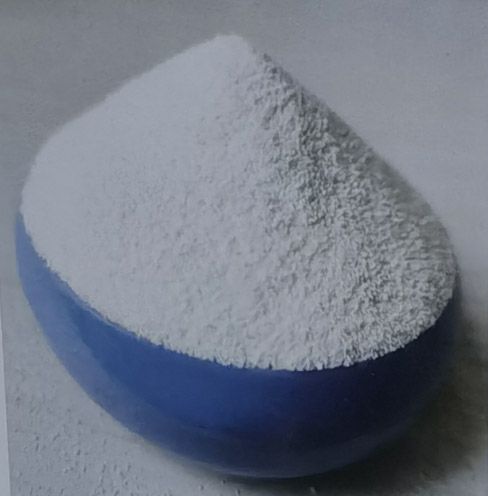PE Wax | Polyethylene wax
What is PE Wax?
This particular wax type is notably robust, making it valuable for applications requiring abrasion resistance and matting. In printing ink applications, polyethylene-based waxes are typically utilized in the form of dispersions or pastes, often prepared through crystallization methods. Incorporating micronized PE wax at around 1-2% in printing ink formulation and aqueous polyurethane coatings has been proven to substantially improve rub resistance.
Characteristics of PE Wax
polyethylene wax is used as an additive in printing inks formulations because of its unique quality. Here are few of its characteristics that is why it’s used in these formulations.
Better Lubrication
PE wax acts as an effective lubricant. When incorporated into the ink formulation, PE wax significantly reduces the friction between the ink and the printing equipment, such as rollers, plates, and other components. This reduction in friction minimizes wear and tear on the equipment, contributing to its longevity and efficient operation.
Increased lubrication facilitated by PE wax has a direct impact on the quality of printed output. It aids in preventing issues like ink smudging, streaking, and uneven coverage. The smooth and controlled flow of ink achieved through the lubricating action of polyethylene wax ensures consistent and precise printing results. This is particularly important in industries where high-quality, detailed prints are imperative, such as packaging, labeling, and graphics.
Excellent Thermal Stability
PE wax has excellent thermal stability that prevent issues such as ink bleeding, smudging, or distortion during the curing process. When the ink is exposed to heat for drying or fixing, PE Wax aids in maintaining the sharpness and clarity of printed images, text, or designs. nk that has undergone effective curing due to the presence of PE Wax is less prone to fading, cracking, or other forms of deterioration over time.
High Chemical Resistance
The inclusion of PE Wax imparts a layer of protection to the ink formulation against chemical interactions. This is particularly significant as printing inks often comprise a mixture of pigments, binders, solvents, and additives. These components can sometimes be chemically reactive, leading to unwanted changes in ink consistency, color, or stability. The high chemical resistance of PE wax acts as a safeguard against such interactions, helping to maintain the integrity of the ink’s composition and performance.
High Melting Point
During the ink formulation process, where various components are mixed and heated, the high melting point of PE Wax ensures that it remains in its solid form until intentionally melted. This property simplifies the incorporation of polyethylene wax into the ink formulation, allowing for precise control over its dispersion within the mixture. This assists in minimizing ink smudging, smearing, or transferring onto unintended surfaces, resulting in cleaner and more precise prints.
High Softening Point
As ink components are combined and heated, the wax retains its solid state until the temperature reaches its softening point. This property offers a controlled and gradual transition, allowing for the even dispersion of the wax within the ink formulation. This dispersion contributes to the uniformity of the final ink mixture and its subsequent performance.
In post-printing stages involving heat exposure, the high softening point of PE wax ensures that the wax remains stable and maintains its structural integrity even as temperatures rise. This stability is crucial in preventing distortion or alterations in ink composition that could compromise print quality.
Different Forms of PE wax
The diverse range of PE wax varieties available constitutes a significant role in the formulation and optimization of printing inks. These various wax forms offer distinct properties and functionalities.
Powder Form
PE wax in powder form is finely ground into small particles. This form facilitates rapid and even dispersion within ink formulations. Powdered PE Wax is particularly suitable for applications requiring precise and consistent mixing, as it readily integrates with other ink components, such as pigments and binders. Additionally, its fine particle size enhances the ink’s homogeneity, contributing to smooth print surfaces and excellent color distribution. In Tripletchem, we offer powder PE wax.
Granule Form
PE wax in granular form consists of larger particles compared to powder. Granules offer ease of handling and reduced dust generation during production. The larger particle size can contribute to controlled release of the wax during the printing process, allowing for uniform distribution of wax properties on the printed substrate. Granules also aid in achieving controlled rheological properties of inks, influencing factors like viscosity and flow behavior.
Flakes Form
Flake-form PE wax is characterized by thin, flat pieces resembling small flakes. This form offers a unique combination of attributes. The larger surface area of flakes compared to granules can enhance the interaction between the wax and other ink components, resulting in improved compatibility and stability.
Lump Form
Lump-form PE wax consists of irregularly shaped, larger pieces. While less common than the other forms, lumps can be beneficial in specific scenarios. Lumps can be more convenient for storage and handling, especially for large-scale production. However, they may require additional processing steps, such as melting or breaking down, to achieve consistent dispersion within ink formulations.
What is the Use of PE Wax in Printing Inks?
Anti-Sedimentation
Printing inks often consist of a complex mixture of pigments, binders, solvents, and additives. The tendency of solid particles to settle at the bottom of the ink container can pose significant challenges. Sedimentation can result in ink inhomogeneity, altered color concentrations, and compromised print quality. Sedimentation can lead to issues during the printing process itself, such as inconsistent flow rates and clogging of printing equipment.
When added to ink formulations, PE Wax particles disperse evenly throughout the mixture, creating a barrier that impedes the settling of solid components. The wax particles act as stabilizers, preventing agglomeration and providing a consistent suspension of pigments and other additives within the ink and make it uniform and stable, even when stored for extended periods.
Matting Effect
PE wax achieves the matting effect through its unique ability to disperse within the ink and form a fine, consistent microstructure on the surface of the printed material. This microstructure scatters light, reducing the reflectivity and glossiness of the surface. The degree of matting achieved can be tailored by adjusting the concentration and particle size of the PE Wax in the ink formulation.
Anti-Adhesive
PE Wax achieves its anti-adhesive effect by forming a micro-thin layer on the surface of the printed material. This layer acts as a barrier that reduces the affinity of the ink to adhere to other surfaces. As a result, printed materials are less likely to stick together, smudge, or transfer ink onto adjacent surfaces during handling or stacking.
The anti-adhesive properties of PE Wax extend to various printing applications, including packaging, labels, and publications. In packaging, for example, PE Wax helps prevent printed packaging materials from sticking together during storage, transportation, or consumer use. This ensures that packaged products remain visually appealing and free from defects that could arise from ink transfer or smudging.
Anti-Sagging
PE Wax achieves its anti-sagging effect through its ability to disperse evenly within the ink formulation. By integrating PE Wax particles, the ink gains enhanced viscosity control and thixotropy. Thixotropy refers to the property where the ink’s viscosity decreases under the influence of shear and then recovers when shear forces are removed.
PE Wax contributes to the precise positioning of metallic pigments within the ink formulation. The wax particles create a stable suspension that prevents the pigments from sinking or clustering, ensuring an even distribution across the printed surface. This is essential for achieving the desired metallic effects, such as shimmer, sparkle, or luster, that enhance the visual appeal of printed materials.
PE wax’s ability to disperse in aromatic and aliphatic solvents further enhances its efficacy in addressing anti-settling challenges. These solvents optimize the distribution of the wax within the ink, contributing to improved stability and anti-sagging properties.
Caking Reduction
Caking or agglomeration refers to the undesirable clumping or sticking together of solid particles within the ink formulation. This can occur due to factors like moisture absorption, mechanical agitation, or incompatible interactions between ink components. The presence of caked particles can lead to difficulties in ink dispersion, altered ink consistency, and compromised print quality.
PE Wax effectively counteracts the issue of caking by its ability to disperse within the ink formulation. When PE Wax is added to the ink, its particles create a physical barrier between other solid components. This barrier prevents the solid particles from coming into direct contact and sticking together. As a result, caking is minimized, and the ink maintains its uniformity and consistency over time.
Stain Resistance
When PE wax is incorporated into the ink formulation, its particles disperse within the ink and create a micro-thin layer on the surface of the printed material. This layer acts as a shield against the penetration and adherence of substances that might cause staining. The wax’s hydrophobic nature repels liquids, preventing them from soaking into the material and leaving unsightly marks.
The stain resistance provided by PE Wax is particularly advantageous in applications where printed materials may come into contact with liquids, oils, or other potential contaminants. For instance, in labels or packaging for food, beverages, or cosmetics, the stain-resistant properties of PE wax help maintain the visual appeal of the printed content even in challenging environments.


